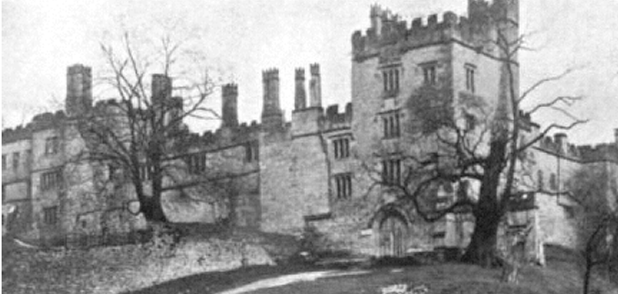The Princess by W. S. Gilbert
W. S. Gilbert wrote The Princess in the latter part of 1869. The play opened in London in January 1870 to indifferent success. It closed its London run in April, went on tour for a short while, and was never again performed in Gilbert’s lifetime. He liked The Princess well enough to include it with four other non-Sullivan plays (out of a total of over thirty) in Original Plays of 1876. The 1876 Princess is an abridgement. Most of the songs and about thirty lines of dialogue are deleted, along with many of the stage directions. Gilbert corrects some dialogue errors, where he allowed Hildebrand to speak Hilarion’s lines. It would appear that the 1876 Princess was intended to be preserved as a reading copy.
Gilbert wrote Princess Ida in the latter part of 1883. The opera opened in London in January 1884 with some success and ran to October. The dialogue of the opera is closely derived from The Princess. Over half of the spoken lines from The Princess are imported or adapted into Princess Ida, and make up almost all of its spoken lines. This edition shows which lines from The Princess were used for Princess Ida. It also shows how they were modified for the opera
Gilbert recognized the Gilbertian tone of the first four (of seven) parts of Tennyson’s medley. The main story line, the clever situations and the characters originate with Tennyson. Lady Blanche is urged to “wink” at the appearance of the men in both Princesses. Blanche is drawn more sharply and less kindly by Tennyson. She is softened and made more sympathetic by Gilbert. It is Lady Blanche of The Princess, created by Gilbert before the Gilbert & Sullivan operas, who is the prototype of Gilbert’s older women.
King Gama is drawn more sharply by Gilbert, though both Gamas share the attribute of commonness in appearance and attitude. Tennyson’s Gama is bland and lacking in energy. But the source of Gilbert’s Gama can be seen in the other; and of course both Gamas give to the Princess the free use of a royal residence.
Cyril is the same person as seen by Tennyson and by Gilbert. His down to earth, light approach is present in both Princesses. Perhaps Cyril’s best Gilbertian line is given by Tennyson “For dear are (Psyche’s) three castles to my wants, and dear is Psyche to my heart.” It is in both Princesses that Cyril drinks too much and sings a careless song, causing the Princess to flee and fall into the river.
The Prince (Hilarion), King (Hildebrand), Florian, Arac and his brothers, Princess Ida, Lady Psyche, and Melissa are easily recognizable as having the same qualities in both Princesses.
Gilbert was aware that he could be perceived as having borrowed too freely from Tennyson. He states in an introductory note to Original Plays that “The Princess is a respectful parody of Mr. Tennyson’s exquisite poem. It has been generally held, I believe, that if a dramatist uses the mere outline of an existing story for dramatic purposes, he is at liberty to describe his play as ‘original.’”
Gilbert described The Princess as an Allegory, the use of fictional characters to express truths about the human experience. It is the only Gilbert work to be so designated. How did Gilbert change Tennyson’s poem to allow him to claim this designation? Both tales start with the Prince and Princess separated under the same circumstances and both tales finish with them united by the words “Indeed I love thee–Come.” Gilbert saw, however, that he could completely invert the battle between Ida’s brothers and Hilarion, and not affect the outcome of the story. It is the occurrence of the battle, not the result, which creates the emotional situation which awakens Ida’s feelings. She follows these feelings and finds herself “yoked” to Hilarion “in all exercise of noble end.”
There is a slightly later 1870 edition of The Princess, where Gilbert excised a number of lines. They are in Scene I and are bracketed in this edition.
The Princess by W. S. Gilbert has been included in the book The Princess and Princess Ida. A printed copy of the book may be purchased at www.LULU.com/shop
Enter TRUTT in the Search Books box.
Click to download 0.6 MB PDF file The Princess by W. S. Gilbert : DOWNLOAD
Scholars may be interested in the following Textual Comparison. This is not recommended for the casual reader. View it at a magnification of 150% in Adobe Reader to allow the smaller symbols to be clearly read. Click to download 0.7 MB PDF file The Princess - Textual Comparison : DOWNLOAD
